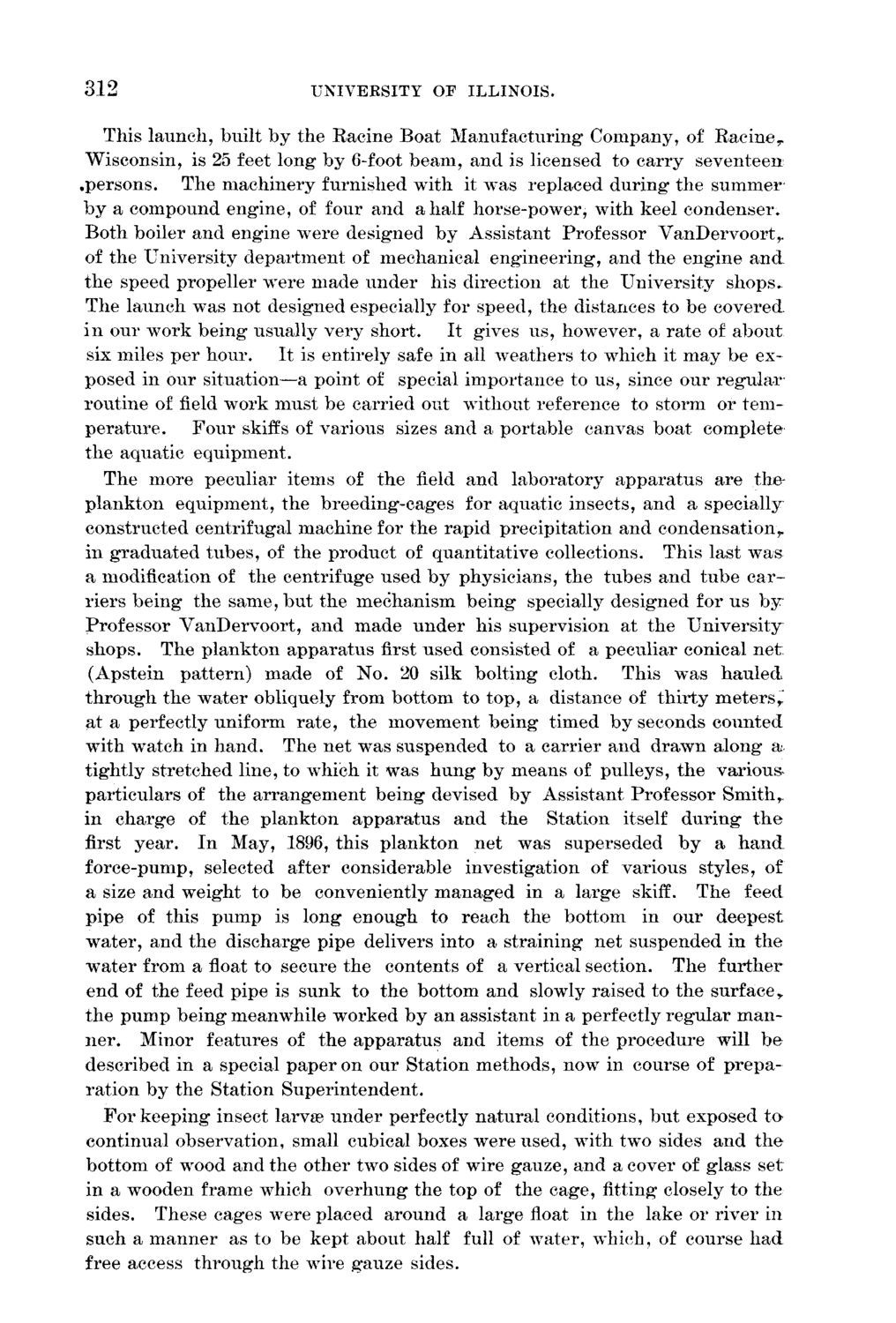| |
| |
Caption: Board of Trustees Minutes - 1896
This is a reduced-resolution page image for fast online browsing.

EXTRACTED TEXT FROM PAGE:
312 UNIVERSITY OF ILLINOIS. This launch, built by the Racine Boat Manufacturing Company, of Racine T Wisconsin, is 25 feet long by 6-foot beam, and is licensed to carry seventeen .persons. The machinery furnished with it was replaced during the summer by a compound engine, of four and a half horse-power, with keel condenser. Both boiler and engine were designed by Assistant Professor VanDervoort r of the University department of mechanical engineering, and the engine and the speed propeller were made under his direction at the University shops. The launch was not designed especially for speed, the distances to be covered, in our work being usually very short. It gives us, however, a rate of about six miles per hour. It is entirely safe in all weathers to which it may be exposed in our situation—a point of special importance to us, since our regular routine of field work must be carried out without reference to storm or temperature. Four skiffs of various sizes and a portable canvas boat complete the aquatic equipment. The more peculiar items of the field and laboratory apparatus are theplankton equipment, the breeding-cages for aquatic insects, and a specially: constructed centrifugal machine for the rapid precipitation and condensation,, in graduated tubes, of the product of quantitative collections. This last was a modification of the centrifuge used by physicians, the tubes and tube carriers being the same, but the mechanism being specially designed for us by Professor VanDervoort, and made under his supervision at the University shops. The plankton apparatus first used consisted of a peculiar conical net (Apstein pattern) made of No. 20 silk bolting cloth. This was hauled through the water obliquely from bottom to top, a distance of thirty meters r* at a perfectly uniform rate, the movement being timed by seconds counted with watch in hand. The net was suspended to a carrier and drawn along a tightly stretched line, to which it was hung by means of pulleys, the various* particulars of the arrangement being devised by Assistant Professor Smithy in charge of the plankton apparatus and the Station itself during the first year. In May, 1896, this plankton net was superseded by a hand force-pump, selected after considerable investigation of various styles, of a size and weight to be conveniently managed in a large skiff. The feed pipe of this pump is long enough to reach the bottom in our deepest water, and the discharge pipe delivers into a straining net suspended in the water from a float to secure the contents of a vertical section. The further end of the feed pipe is sunk to the bottom and slowly raised to the surface > the pump being meanwhile worked by an assistant in a perfectly regular manner. Minor features of the apparatus and items of the procedure will be described in a special paper on our Station methods, now in course of preparation by the Station Superintendent. For keeping insect larva? under perfectly natural conditions, but exposed to continual observation, small cubical boxes were used, with two sides and the bottom of wood and the other two sides of wire gauze, and a cover of glass set in a wooden frame which overhung the top of the cage, fitting closely to the sides. These cages were placed around a large float in the lake or river in such a manner as to be kept about half full of water, which, of course had free access through the wire gauze sides.
| |